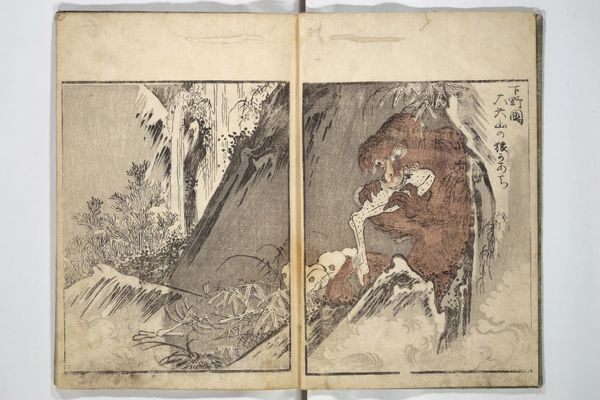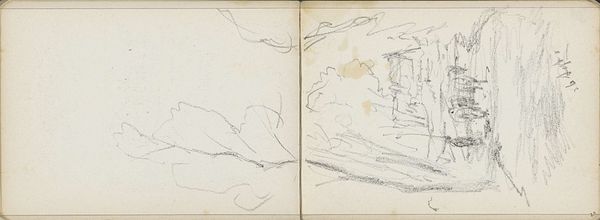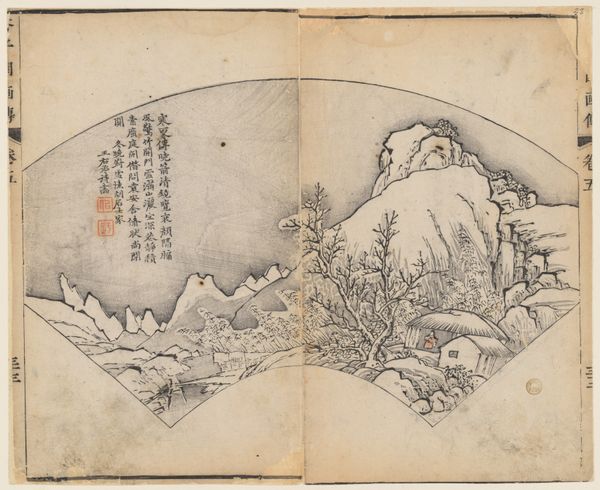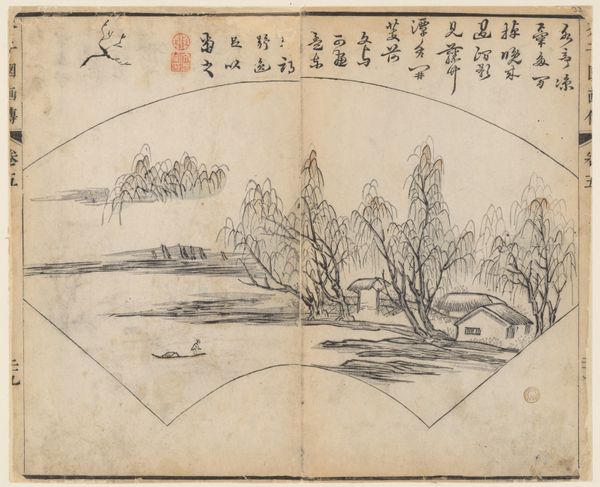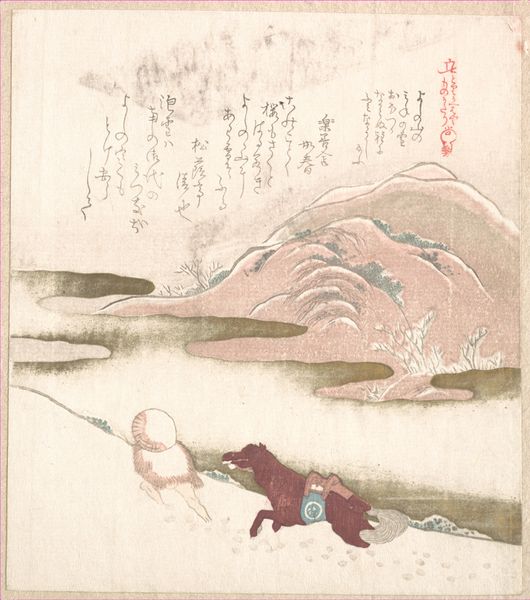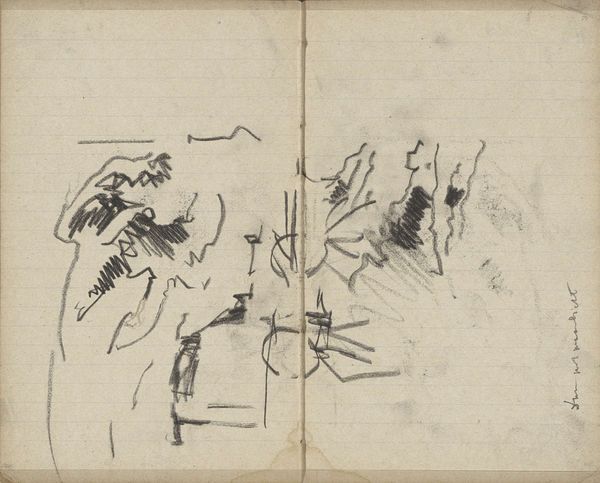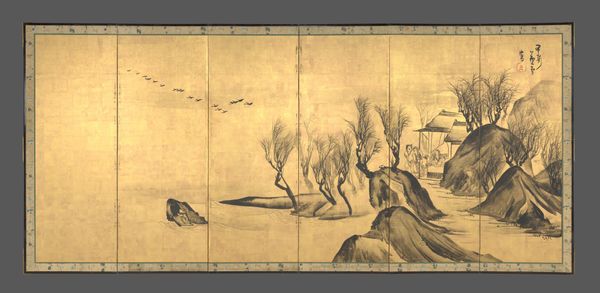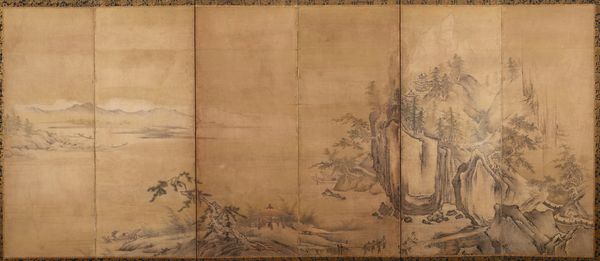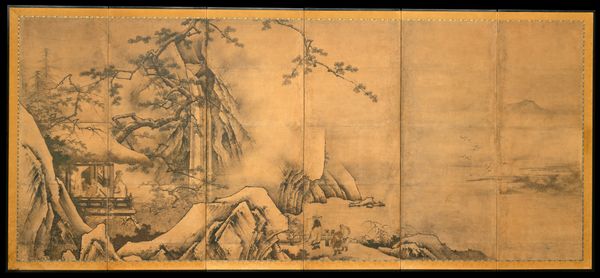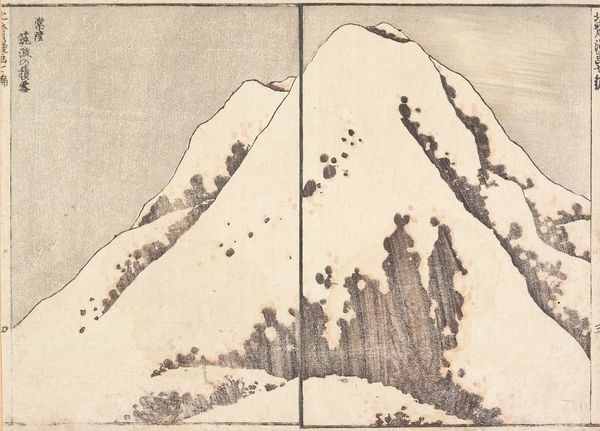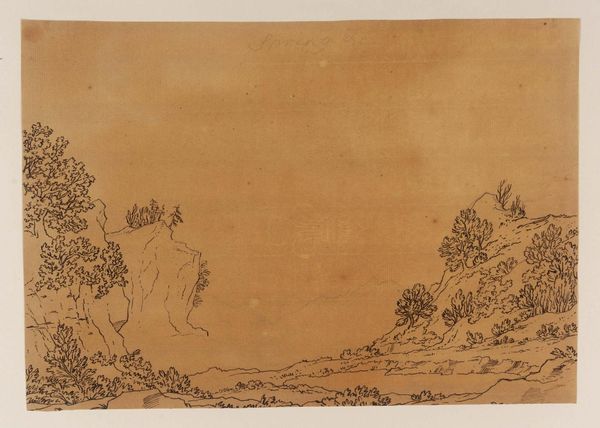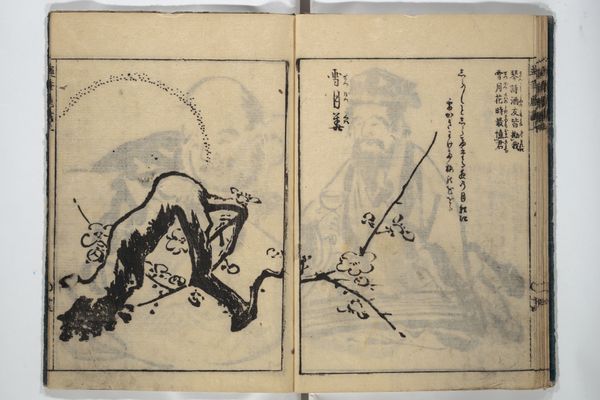
Kinpaen (Bunpō) Picture Album (Kinpaen gafu 金波園画譜) 1820
0:00
0:00
drawing, paper, ink
#
drawing
#
asian-art
#
ukiyo-e
#
paper
#
ink
Dimensions: 10 7/16 × 4 1/2 in. (26.5 × 11.5 cm)
Copyright: Public Domain
Curator: Today we are looking at an image from "Kinpaen Picture Album", created around 1820 by Kawamura Bunpō. It’s a page from an album, done in ink and color on paper. Editor: It’s interesting—a certain quietude, despite depicting creatures like crabs usually associated with vitality. The color palette is incredibly subdued. Curator: Ukiyo-e, as a genre, often reflected contemporary urban life and its pleasures. The genre played with these depictions by using them to reveal complex politics regarding societal hierarchy. One lens here could be examining the political metaphors employed within the image. For instance, what is the significance of the crab as a symbol, within the socioeconomic realities of Bunpō's Japan? Editor: I am struck by the visual vocabulary Bunpō employs to describe texture—the bristly claws, the rock’s roughness rendered so delicately with layered lines. It draws from observation, yet the world portrayed feels very stylized. Do we know how art production and art schools informed this album? Curator: Bunpō inherited his family’s painting techniques, and he became affiliated with a Kyoto-based circle of artists devoted to sketching and classical design. We see their influences. But the ukiyo-e sensibility—with its echoes of performance—lends a performative lens on the artist and their depiction. This could be seen as Bunpo’s way of performing observation while acknowledging social conventions. Editor: It’s thought-provoking to think about that. Knowing it was intended as part of a larger album influences the viewing too. It is not necessarily supposed to be a ‘final’ version of an artwork. I find that makes me pause over each page more. Curator: Yes. Examining this piece allows for exploration beyond aesthetics, and an unveiling of sociopolitical dimensions. Looking at pieces like this lets us examine, critique, and re-evaluate cultural norms, giving rise to richer understandings. Editor: Absolutely, appreciating its function within a larger narrative enriches our appreciation, while pondering what it tells us about the history of material culture in art making.
Comments
No comments
Be the first to comment and join the conversation on the ultimate creative platform.
